 |
 |
Our enthusiastic and extremely knowledgeable perennials team is here to answer your questions and help you choose the best perennials for your situation. There’s always something in bloom for sun, shade, butterflies, birds or deer resistance as well as a variety of bulbs for your space.
Stroll through our time-tested favorites and introduce yourself to the newest varieties. We garden with perennials too; we love them and it shows!
|
92 found, showing page 5 of 7

Height: 5 feet
Spread: 3 feet
Sunlight: full sun partial shade
Hardiness Zone: 2b
Ornamental Features:
Switch Grass features airy plumes of rose flowers rising above the foliage in mid summer. The brick red seed heads are carried on showy plumes displayed in abundance from late summer to mid fall. Its grassy leaves are green in color. The foliage often turns yellow in fall.
Landscape Attributes:
Switch Grass is an herbaceous perennial grass with an upright spreading habit of growth. Its relatively fine texture sets it apart from other garden plants with less refined foliage.
This is a relatively low maintenance plant, and is best cut back to the ground in late winter before active growth resumes. It has no significant negative characteristics.
Switch Grass is recommended for the following landscape applications:
- Accent
- Mass Planting
- General Garden Use
Planting & Growing:
Switch Grass will grow to be about 4 feet tall at maturity, with a spread of 3 feet. It tends to be leggy, with a typical clearance of 1 foot from the ground, and should be underplanted with lower-growing perennials. It grows at a medium rate, and under ideal conditions can be expected to live for approximately 15 years. As an herbaceous perennial, this plant will usually die back to the crown each winter, and will regrow from the base each spring. Be careful not to disturb the crown in late winter when it may not be readily seen!
This plant does best in full sun to partial shade. It is very adaptable to both dry and moist locations, and should do just fine under typical garden conditions. It is considered to be drought-tolerant, and thus makes an ideal choice for a low-water garden or xeriscape application. It is not particular as to soil type, but has a definite preference for alkaline soils, and is able to handle environmental salt. It is somewhat tolerant of urban pollution. This species is native to parts of North America. It can be propagated by division.
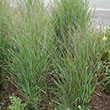
Red tipped foliage. Red blooms. Compact clumping. Native. USDA 5-9

Dark, smoky rose-purple flower spikes. Deep green arching foliage. USDA 5-8

Red tipped foliage. Red blooms. Compact clumping. Native. USDA 5-9
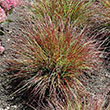
Bright red accent on blades. Compact. Tan seed heads. USDA 5-9
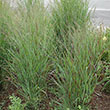
Red tipped foliage. Red blooms. Compact clumping. Native. USDA 5-9
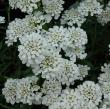
White flowers & dark semi-evergreen leaves offer dense contrasting color. USDA 3-8
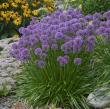
Compact, upright clump of glossy green leaves. Clusters of bright purple flowers blooms in mid-summer. USDA 4-8
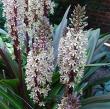
Pinkish blooms. Purple foliage. Prefers rich, Well-drained Soils. USDA 6-9
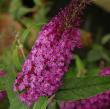
Fragrant, purple blooms. Compact dwarf. Tolerates drought & heat. USDA 5-9
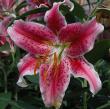
Vibrant, fuschia blooms are edged with white margins. Upright. USDA 3-9
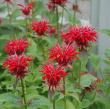
Height: 4 feet
Spacing: 30 inches
Sunlight: full sun partial shade
Hardiness Zone: 3a
Other Names: Bergamot, Oswego Tea
Ornamental Features:
Jacob Cline Beebalm has masses of beautiful clusters of fragrant red flowers at the ends of the stems from mid to late summer, which are most effective when planted in groupings. The flowers are excellent for cutting. Its fragrant pointy leaves remain forest green in color throughout the season.
Landscape Attributes:
Jacob Cline Beebalm is an herbaceous perennial with an upright spreading habit of growth. Its relatively coarse texture can be used to stand it apart from other garden plants with finer foliage.
This plant will require occasional maintenance and upkeep, and should be cut back in late fall in preparation for winter. It is a good choice for attracting bees, butterflies and hummingbirds to your yard, but is not particularly attractive to deer who tend to leave it alone in favor of tastier treats. Gardeners should be aware of the following characteristic(s) that may warrant special consideration: Spreading, Self-Seeding
Jacob Cline Beebalm is recommended for the following landscape applications:
- Mass Planting
- General Garden Use
- Naturalizing And Woodland Gardens
Planting & Growing:
Jacob Cline Beebalm will grow to be about 3 feet tall at maturity, with a spread of 3 feet. When grown in masses or used as a bedding plant, individual plants should be spaced approximately 30 inches apart. It grows at a fast rate, and under ideal conditions can be expected to live for approximately 5 years. As an herbaceous perennial, this plant will usually die back to the crown each winter, and will regrow from the base each spring. Be careful not to disturb the crown in late winter when it may not be readily seen!
This plant does best in full sun to partial shade. It is very adaptable to both dry and moist locations, and should do just fine under typical garden conditions. It is not particular as to soil type or pH. It is highly tolerant of urban pollution and will even thrive in inner city environments. This particular variety is an interspecific hybrid. It can be propagated by division; however, as a cultivated variety, be aware that it may be subject to certain restrictions or prohibitions on propagation.
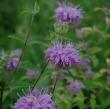
Showy clusters of lavender, pink or white pom pom flowers. Aromatic leaves. Native. Clay tolerant. USDA 3-9
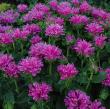
Fragrant and drought-tolerant. Attracts hummingbirds & butterflies. Deer resistant. USDA 4-8
92 found, showing page 5 of 7







